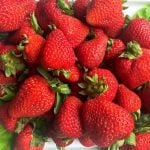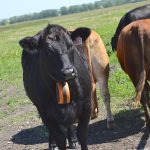Judging competition | Thirty-five youth competitors vie for a spot at Agribition
Participants at the Saskatchewan 4-H Judging Provincials recently got the chance to enhance their skills.
“Every time you go somewhere, you learn one thing or two things. And that one thing can make a difference when you go somewhere else,” said Robert Pineo, 22, of the Weyburn 4-H Beef Club.
Teresa Mann, 19, of the Viscount 4-H Beef Club, said she enjoys learning from other people.
“A lot of different people have different points of views and they can add little tips of aspects that help you out. So it just helps a person the next time they go somewhere and keep moving forward.”
Read Also

Why feds imposed EV tariffs
Moe and Kinew have a fight on their hands when it comes to eliminating the EV tariff. Canada has to worry about pissing off the U.S. and Mexico and hundreds of thousands of auto workers.
Mann and Pineo were two of 35 participants at this year’s provincial judging, which was held in Lloydminster Aug. 22-23.
“We’d like to congratulate the kids on making it this far. It’s a huge accomplishment to just make it to provincials,” said Kelsey Dust, the northwest regional specialist with Saskatchewan 4-H.
Competition participants judged light horse, heavy or draft horse, beef bulls, beef heifers and a canine class of Boston Terriers.
“Its kind of fun judging different animals and hearing why they’re good and that sort of thing,” said Mann.
Judges explained to the members what they look for in an animal.
“Length, width, depth and testicles, those are the four main points you want to key in when looking at bulls,” said Jonathan Lock, the beef bull judge.
“You want length of spine, depth of rib and width across their back. And then you want their testicles to be even. You know, nice epididymis on them. You don’t want them twisted.”
The members were then able to look at the animals, write down key points, place them first, second, third or fourth and then present their reasons orally to the judge.
“It’s easier almost sometimes to do oral (reasons), but the nerves is usually what gets you,” Pineo said.
“So it’s a really good thing to do orals because it makes you more comfortable when you’re in situations around people, speaking in front of groups.”
Participants used to present some reasons orally and others written, but that has changed.
Mary-Anne Carson, who chairs the judging committee at the Lloydminster Exhibition, said the process was changed because that is how Canadian Western Agribition runs its judging, which is where the winners eventually move.
“We try to do the same just so that it’s fair for the kids,” Carson said.
“They get a taste of what it’s like, and it’s a little easier at this level than Agribition, where you’ve got kids from all over the country and the states.”
Saskatchewan sends a team of eight members as well as four alternates to Agribition each year.














